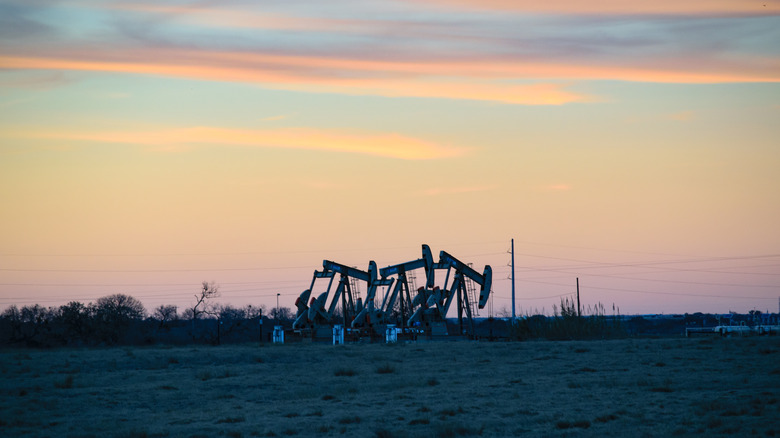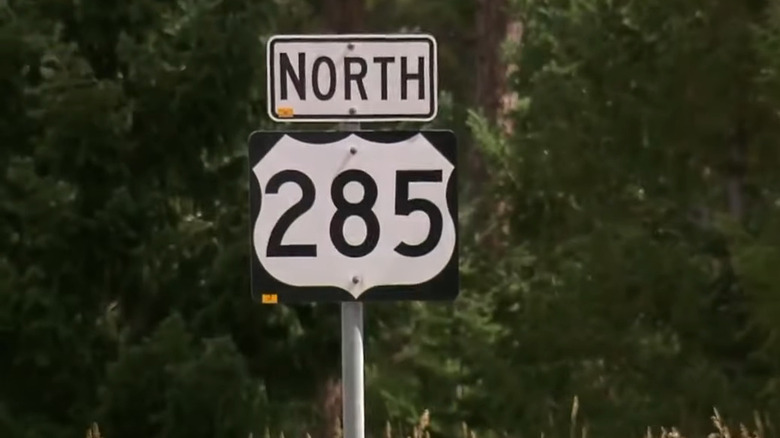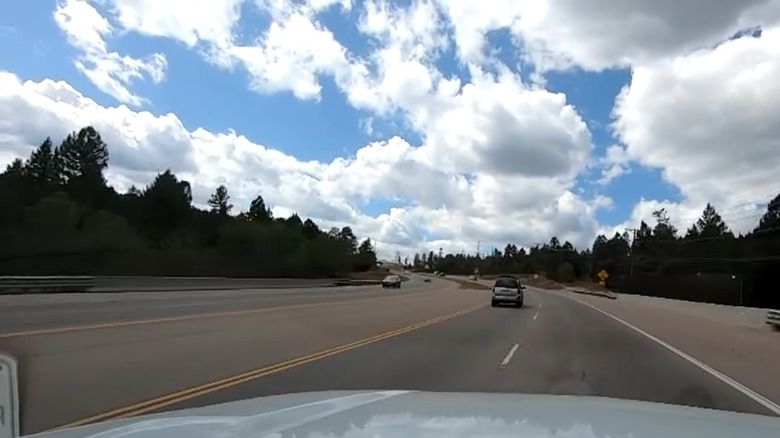Why This Road Has Been Given The Unsettling Nickname Of America's 'Death Highway'
The Permian Basin, which stretches across Western Texas and New Mexico, comprises rocks and minerals that date back millions of years. Today, more than half of the Permian times petroleum extracted from the earth comes from this area. The land is beautiful, but you may want to avoid the region while planning your perfect U.S. road trip. This is the home of America's "Death Highway."
Even if you're an extremely cautious driver, not prone to making reckless road trip mistakes behind the wheel, this is a dangerous drive. Route 285, the actual name of this treacherous route, is often used by big rigs carrying fuel and supplies through the basin. These massive trucks are why the highway has earned its notorious reputation as one of the deadliest in the United States. Exhausted drivers in huge vehicles going at top speed put themselves, each other, and drivers in ordinary vehicles at risk of fatal collisions.
How deadly is Death Highway?
A pair of white crosses by the side of Route 285 serves as a memorial to Michael Ponce and a grim reminder of the horrific consequences of such dangerous driving conditions. As detailed by the Carlsbad Current-Argus, in 2018, Ponce was killed when one of the large semi trucks carrying supplies for the oil fields (in this case, sand used in the fracking process) unexpectedly veered over the double yellow line and into Ponce's vehicle. There was nothing he could've done to avoid the crash.
Any highway can be dangerous under the right conditions, but Route 285 has gained national attention for its dangers. The Texas Department of Transportation (pdf) reported a severe spike in crashes in this area after 2016. More families than just Ponce's have found themselves mourning a terrible loss on the Death Highway. In 2017, a staggering 93 people died in crashes on Route 285 (per The Dallas Morning News). In the worst years, thousands of wrecks occur annually.
Why is Route 285 so dangerous?
Historically, when demand for oil increases, so do deaths on Route 285. Driving a big rig through the basin is an incredibly dangerous and difficult job, and for people willing to work long hours, the pay is competitive. In 2017, The Dallas Morning News reported that drivers were making as much as $120K. Unfortunately, the high rewards and high demand combine to create a deadly system where inexperienced drivers are rushed into these dangerous roles and incentivized to work long hours.
"When you've been in the oilfield for ten to 11 days, working 14 hours a day, you just become so tired that you're not thinking straight," trucker and driving instructor James "Whiskey" Stroup explained (via The Dallas Morning News). "You're just brain dead, because you're living off four to six hours of sleep."
The situation becomes deadly when there is more demand for oil, and the roads become more crowded. While the speed limits have been lowered to prevent fatal crashes, many drivers still speed. Further, sinkholes from the nearby fracking can make conditions on the road worse — roads that aren't always well maintained.


